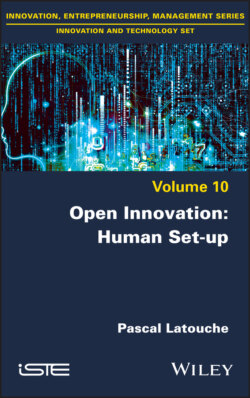Читать книгу Open Innovation - Pascal Latouche - Страница 10
I.2. What’s this “thing”?
ОглавлениеHere I was, in charge of a corporate accelerator to be created in three months, from a blank sheet of paper in terms of objectives and implementation. I was not alone in this adventure; a long-term colleague was once again at my side to help me move forward with this new challenge. I say again because we’d been working together for a while and we really enjoyed doing it.
I had vaguely understood from this new challenge that the company was keen to support the world of young innovative companies and benefit from it at least from a brand image point of view. It was the time when the major brands in France (CAC 40 stock market index) wanted to show themselves, politicians and citizens their commitment to the times: digital technology.
What I learned from the school of life and from the school of the professional world is that when you spend money, you have to make money. I don’t know if I knew how to create a business for myself. But I knew how to do business with a product or service. In more elaborate terms, I would say that managing things could only be business to me. We had to do business with the start-ups. Moreover, communication is not my field (and I have a lot of respect for the many corporate communicators). It is on this unique “Business” conviction that I developed the objectives and implementation of the corporate start-up accelerator.
I can’t help but reiterate the reasoning that many who have heard me since in speeches are familiar with. Let’s go! In the digital world, there is a bloody war. Furthermore, digital technology has broken down the barriers between sectors of activity. In short, everything is in everything, because of or thanks to digital technology. An established company, in order to avoid losing its position on its markets, must therefore quickly provide innovative solutions to its clients to build loyalty, or even bring new solutions to market in an attempt to acquire new ones. We both know that producing innovation within an established company can take a long time…. Therefore, being able to capitalize on start-ups, their velocity, their innovations, can represent a significant competitive advantage for the established company. At the same time, start-ups looking for clients are well advised to deal with established companies that have large customer bases. It is not over until the fat lady sings. This was to be the main objective of the corporate start-up accelerator: to make commercial partnerships between internal business units and start-ups. In short, it was necessary to “marry” start-ups and business units.
It is difficult to claim that this choice, which I can clearly state as having been an individual choice for the corporate accelerator at the time (with the consent of my company), is a choice of objective that can be generalized to all start-up corporate accelerators. It would be wrong to claim this, and I believe that many start-ups would certainly be able to confirm that there is a gulf between the promises of objectives made by corporate structures supporting start-ups and the reality. The constant is the communication about the relationship between the established company and the start-ups. Some corporate start-up accelerators go further in the sense that the objective is primarily business, communication being only the representative that aims to speak about the results obtained. This was my conviction from the first second of my mandate.
As for the corporate accelerator that I was responsible for launching with my employee, things were very clear. This choice would become the decision that would change the course of my life in a lasting way. It was easier said than done, and I’m weighing up my words, because that’s what’s making me write these ones….
